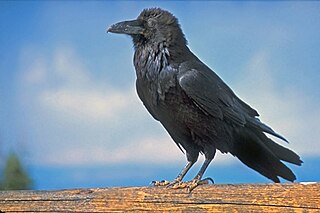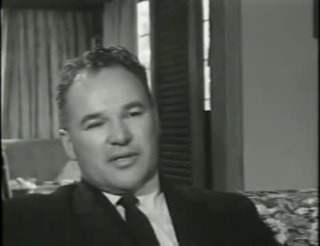
An unidentified flying object (UFO), more recently renamed by US officials as an unidentified anomalous phenomenon (UAP), is any perceived aerial phenomenon that cannot be immediately identified or explained. On investigation, most UFOs are identified as known objects or atmospheric phenomena, while a small number remain unexplained.

The raven paradox, also known as Hempel's paradox, Hempel's ravens, or rarely the paradox of indoor ornithology, is a paradox arising from the question of what constitutes evidence for the truth of a statement. Observing objects that are neither black nor ravens may formally increase the likelihood that all ravens are black even though, intuitively, these observations are unrelated.

Ancient astronauts refers to a pseudoscientific hypothesis which holds that intelligent extraterrestrial beings visited Earth and made contact with humans in antiquity and prehistoric times. Proponents suggest that this contact influenced the development of modern cultures, technologies, religions, and human biology. A common position is that deities from most, if not all, religions are extraterrestrial in origin, and that advanced technologies brought to Earth by ancient astronauts were interpreted as evidence of divine status by early humans.
In ufology, a close encounter is an event in which a person witnesses an unidentified flying object. This terminology and the system of classification behind it were first suggested in astronomer and UFO researcher J. Allen Hynek's 1972 book The UFO Experience: A Scientific Inquiry. Categories beyond Hynek's original three have been added by others but have not gained universal acceptance, mainly because they lack the scientific rigor that Hynek aimed to bring to ufology.

Project Blue Book was the code name for the systematic study of unidentified flying objects by the United States Air Force from March 1952 to its termination on December 17, 1969. The project, headquartered at Wright-Patterson Air Force Base, Ohio, was initially directed by Captain Edward J. Ruppelt and followed projects of a similar nature such as Project Sign established in 1947, and Project Grudge in 1948. Project Blue Book had two goals, namely, to determine if UFOs were a threat to national security, and to scientifically analyze UFO-related data.

The extraterrestrial hypothesis (ETH) proposes that some unidentified flying objects (UFOs) are best explained as being physical spacecraft occupied by extraterrestrial life or non-human aliens, or non-occupied alien probes from other planets visiting Earth.
In ufology, the psychosocial hypothesis, abbreviated PSH, argues that at least some UFO reports are best explained by psychological or social means. It is often contrasted with the better-known extraterrestrial hypothesis (ETH), and is particularly popular among UFO researchers in the United Kingdom, such as David Clarke, Hilary Evans, the editors of Magonia magazine, and many of the contributors to Fortean Times magazine. It has also been popular in France since the publication in 1977 of a book written by Michel Monnerie, Et si les ovnis n'existaient pas?.

Josef Allen Hynek was an American astronomer, professor, and ufologist. He is perhaps best remembered for his UFO research. Hynek acted as scientific advisor to UFO studies undertaken by the U.S. Air Force under three projects: Project Sign (1947–1949), Project Grudge (1949–1951) and Project Blue Book (1952–1969).

Black triangles are UFOs reported as having a triangular shape and dark color, typically observed at night, described as large, silent, hovering, moving slowly, and displaying pulsating, colored lights and can turn their lights off.

Jacques Fabrice Vallée is an Internet pioneer, computer scientist, venture capitalist, author, ufologist and astronomer currently residing in San Francisco, California and Paris, France.

The Robertson Panel was a scientific committee which met in January 1953 headed by Howard P. Robertson. The Panel arose from a recommendation to the Intelligence Advisory Committee (IAC) in December 1952 from a Central Intelligence Agency (CIA) review of the U.S. Air Force investigation into unidentified flying objects, Project Blue Book. The CIA review itself was in response to widespread reports of unidentified flying objects, especially in the Washington, D.C. area during the summer of 1952.

Project Grudge was a short-lived project by the U.S. Air Force (USAF) to investigate unidentified flying objects (UFOs). Grudge succeeded Project Sign in February, 1949, and was then followed by Project Blue Book. The project formally ended in December 1949, but continued in a minimal capacity until late 1951.

The Mariana UFO incident occurred in August 1950 in Great Falls, Montana. The film footage of the sighting is believed to be among the first ever taken of what came to be called an unidentified flying object. The footage was investigated by the U.S. Air Force, and found to be reflections from two F-94 jet fighters.
This is a list of alleged sightings of unidentified flying objects or UFOs in Brazil.

From July 12 to 29, 1952, a series of unidentified flying object (UFO) sightings were reported in Washington, D.C., and later became known as the Washington flap, the Washington National Airport Sightings, or the Invasion of Washington. The most publicized sightings took place on consecutive weekends, July 19–20 and July 26–27. UFO historian Curtis Peebles called the incident "the climax of the 1952 (UFO) flap" - "Never before or after did Project Blue Book and the Air Force undergo such a tidal wave of (UFO) reports."

A flying saucer is a descriptive term for a type of flying craft having a disc or saucer-shaped body, commonly used generically to refer to an anomalous flying object. The term was coined in 1947 but has generally been supplanted since 1952 by the United States Air Force term unidentified flying objects. Early reported sightings of unknown "flying saucers" usually described them as silver or metallic, sometimes reported as covered with navigation lights or surrounded with a glowing light, hovering or moving rapidly, either alone or in tight formations with other similar craft, and exhibiting high maneuverability.
The Belgian UFO wave was a series of sightings of triangular UFOs in Belgium, which lasted from 29 November 1989 to April 1990.
The interdimensional hypothesis is a proposal that unidentified flying object (UFO) sightings are the result of experiencing other "dimensions" that coexist separately alongside our own in contrast with either the extraterrestrial hypothesis that suggests UFO sightings are caused by visitations from outside the Earth or the psychosocial hypothesis that argues UFO sightings are best explained as psychological or social phenomenon.

In ethology and cognitive ethology, the hawk/goose effect refers to a behavior observed in some young birds when another bird flies above them: if the flying bird is a goose, the young birds show no reaction, but if the flying bird is a hawk, the young birds either become more agitated or cower to reduce the danger. The observation that short-necked and long-tailed birds flying overhead caused alarm was noted by Oskar Heinroth. Friedrich Goethe conducted experiments with silhouettes to examine alarm reactions in 1937 and a more systematic study was conducted in the same year by Konrad Lorenz and Nikolaas Tinbergen which is considered one of the classic experiments of ethology.











